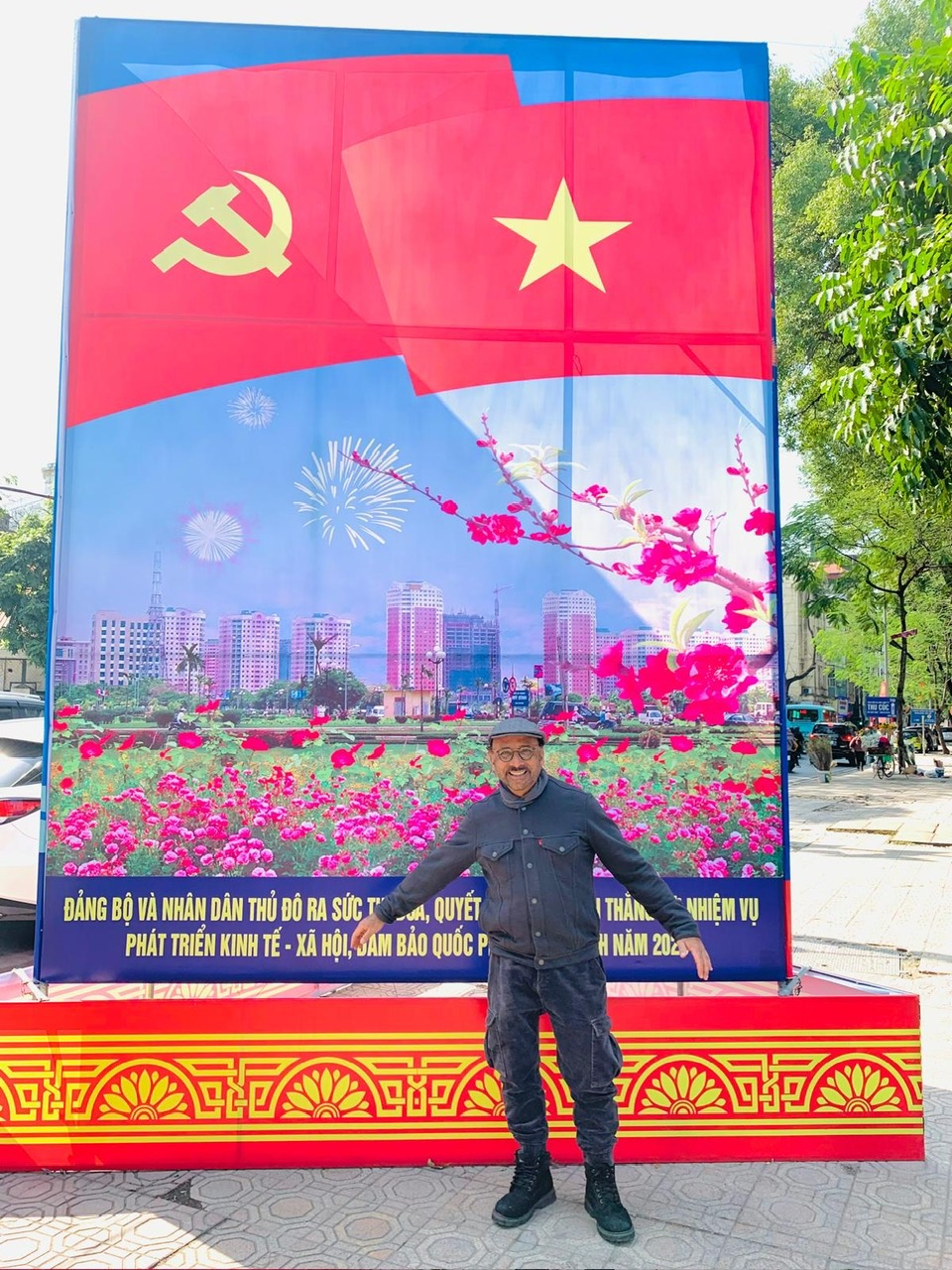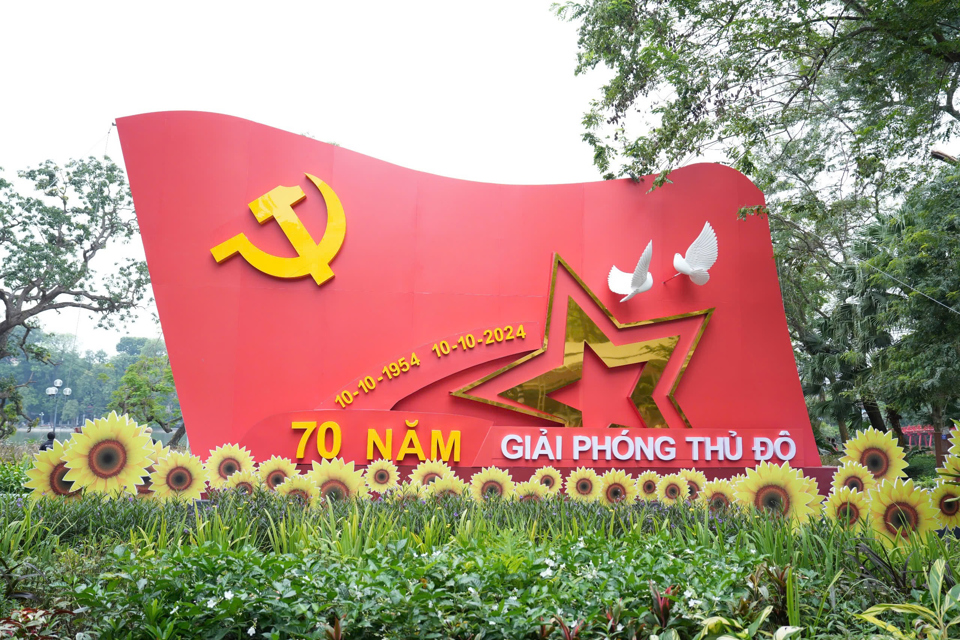After three decades of working for the United Nations, Cesar Guedes chose to spend a few years living in Hanoi with his family. He felt fortunate to have experienced the city’s vibrant energy during its Liberation Day celebrations on several occasions.
In an interview with The Hanoi Times, Guedes described Hanoi as an “eclectic city with a unique blend of old and new, traditional and modern, colonial and Soviet styles.” He added, “It’s a city with a distinct personality that leaves a lasting impression on visitors and residents alike.”
| Cesar Guedes, who first came to Vietnam in 2017, immediately fell in love with Hanoi. Photo: The Hanoi Times |
Can you tell us about your connection with Hanoi?
My introduction to Vietnam was during a family vacation in December 2017. I was working as the Country Director of a United Nations agency in Pakistan at the time. Vietnam’s history, culture, geography, and the resilience of its people had always fascinated me.
Our trip began in Hanoi and ended in Ho Chi Minh City, with stops at Halong Bay, Haiphong, Hue, Danang, Hoi An, Nha Trang, the Mekong Delta, and Vung Tau along the way. Hanoi, our first destination in the country, immediately charmed us with its immaculate Noi Bai Airport and colonial and traditional architecture in the city center.
I was captivated by the way modernity was gradually expanding into neighborhoods like Tay Ho and beyond. One of the city’s unique features is its numerous lakes and bodies of water, including the Red River, and how neatly the city is developing around them.
My wife and I were so taken with Hanoi that we decided we wanted to live in Vietnam for a while.
In 2021, my wife was offered a position at the Canadian Embassy in Hanoi. Around the same time, I was serving as the Country Director for the United Nations in Afghanistan. I retired in January 2022 after a 30-year career with the United Nations across four continents and joined my wife in Hanoi.
During my almost three-year stay in Vietnam, until our departure for Ottawa, Canada, in August 2024, I had the opportunity to become a visiting professor at Vietnam National University and conduct sessions at the Foreign Trade University (FTU). My fascination with Hanoi and Vietnam’s culture led me to explore the city’s museums, neighborhoods, and the plethora of amazing eateries offering a diverse range of traditional cuisine. My time in Hanoi has been nothing short of incredible, filled with joy and excitement!
How have you seen Hanoi evolve since your last visit or your initial arrival? In your opinion, how has Hanoi changed over the years?
When I arrived in Hanoi in January 2022, the city was just emerging from the pandemic. Although some restrictions were still in place, life was gradually returning to normal. Some public works projects had been paused, but construction soon restarted, and within a few months, I noticed a boom in tastefully designed buildings of all sizes sprouting up across the city.
The pace of construction is remarkable, constantly changing the cityscape and showcasing the pulse of Hanoi’s continued progress. Another notable development is the construction of the metro train, which will significantly improve the city’s transportation system and alleviate traffic congestion.
However, one cause for concern has been the slow renovation of Xuan Dieu avenue. This street has the potential to be one of the most scenic avenues in Hanoi, with its small lake and charming shops and cafes. We hope that the renovations will be completed soon, as it will make a significant difference to the city, especially for the expat community that calls this area home.
| Cesar Guedes has had the opportunity to be in Hanoi several times during Liberation Day celebrations. Photo: The Hanoi Times |
How can Hanoi strike a balance between preserving its historical and cultural heritage and embracing new growth and modernization?
Hanoi is a city of contrasts, seamlessly blending old and new, traditional and modern, colonial and Soviet styles. Its ability to rise from the ashes of war and rebuild itself stronger than ever is admirable.
One notable aspect is the repurposing of heritage buildings in the Old Quarter. These structures have been restored and transformed into modern businesses, including cafes, restaurants, and galleries, preserving their historical architecture while giving them a new lease of life.
Alongside these historic buildings, modern skyscrapers and contemporary structures are rising, creating a dynamic skyline. This juxtaposition showcases Hanoi’s respect for its historical roots while embracing the future. The city’s architectural landscape is a testament to its ability to pay homage to its rich history while meeting contemporary needs.
One of my favorite places in Hanoi to appreciate the city’s art, architecture, and traditions is the Thanh Chuong Palace. This architectural gem showcases unique furniture, porcelain, paintings, sculptures, and lacquered art in a serene setting of gardens and ponds. I also have a soft spot for the Museum of Ethnography, the Vietnam Fine Arts Museum, and the Temple of Literature.
| This year marks the 70th anniversary of Hanoi’s Liberation Day. Photo: The Hanoi Times |
Have you ever been in Hanoi during Liberation Day? If so, how was your experience?
Yes, I had the pleasure of witnessing Hanoi’s Liberation Day celebrations in both 2022 and 2023. It was a wonderful experience to see Hanoians come together and celebrate with such patriotism and joy for freedom and unity. The entire city was adorned with Vietnamese flags, and each neighborhood took pride in decorating their streets and homes.
My recent visit to Dien Bien Phu gave me a deeper understanding of this pivotal moment in Vietnam’s history, highlighting the determination of the Vietnamese army and the nation’s unity in securing independence.
The fireworks display was particularly impressive, and living in Tay Ho allowed me to enjoy the reflection of the fireworks on the calm waters of West Lake. Walking around Hoan Kiem Lake on Liberation Day, with its commemorative exhibits and stalls, was a unique and memorable experience.
How has participating in the Liberation Day celebrations shaped your perspective and understanding of Hanoi?
Being a part of Hanoi’s Liberation Day celebrations gave me a deeper connection to the city’s identity and historical significance. The festivities, with their traditional music, dance, and costumes, showcased the rich cultural heritage of Hanoi.
Immersing myself in these local traditions helped me appreciate the city’s cultural richness and diversity. It brought people from all walks of life together, fostering a sense of unity and community. This collective spirit is an integral part of Hanoi’s identity, emphasizing the power of solidarity and resilience.
Through these celebrations, I gained a holistic understanding of Hanoi, making its historical significance and cultural identity more tangible and meaningful. Visiting the Thang Long Citadel and the Flag Tower during the 69th-anniversary observance last year was especially memorable, with their red flags, banners, and beautiful flower arrangements.
I was touched by the efforts of local Hanoians in guiding and explaining the context of the displays to foreign visitors, despite the language barrier.
Thank you for sharing your thoughts and experiences with us!
The Green Impact: How Expats Can Positively Influence Vietnam’s Environment
Like and follow us on Facebook and Twitter to stay updated with the latest and most exciting news about Vietnam!
The Grand Cultural Extravaganza: A Festival of Peace and Unity
Nearly ten thousand citizens and representatives from diverse city forces united as participants in the rehearsal for the grand opening of the “Cultural Festival for Peace.” This highly anticipated event will commence at 7 AM sharp on the 6th of October, with the rehearsal ensuring a seamless and spectacular start to the festival.










